As a child, I thought the LEGO brand was made shortly before the birth of their classic minifigure. Then it turned out the company is much older than its most famous product. Later, I discovered that plastic moulding in the products from this Danish brand was present for much longer than I expected. I thought then that LEGO started to produce plastic toys sometime in the 1960s.
Some history
In reality, the first injection moulding machine appears in Billund shortly after the war. Of course, the machines of that time were not automatic and the quality of the product largely depended on the skill of the operator and her/his intuition. Much has changed since then, but not the process itself. The bricks are still made by injecting plastic into the mould. Now the machines are producing a total of 4.9 million LEGO bricks per hour.
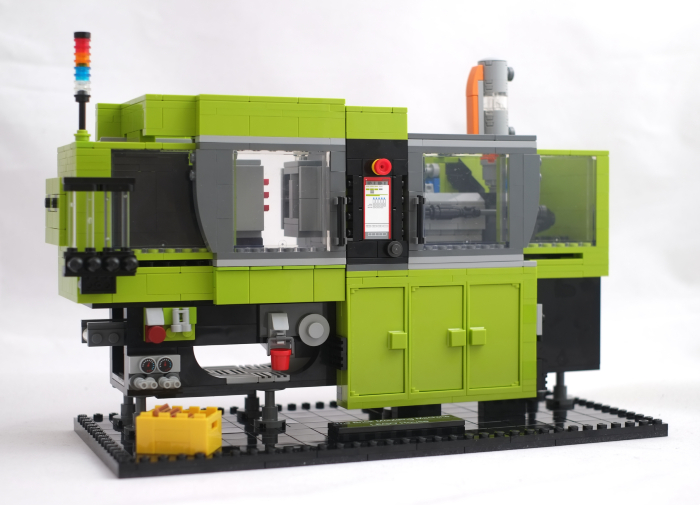
The newest, second LEGO House exclusive set, 40502 The Brick Moulding Machine, relates to the history of this production process. The set, comprising 1,205 parts, is based on to the green machine that stands in the LEGO House and allows guest to experience a real LEGO injection moulding machine up close. This green monster is identical to the moulding machines that work at the regular LEGO production sites. The only difference is that the specially designed mould in LEGO House only contains six 2×4 LEGO bricks.
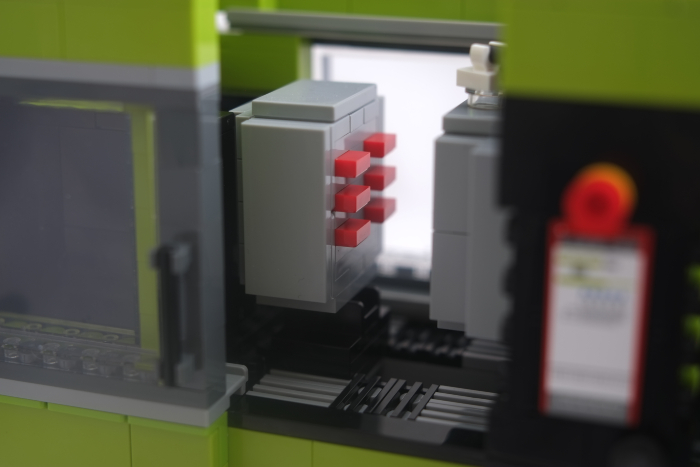
Building process
There is something meta about this set—after all, we build a model of a machine from bricks that were made by the same machine. If I were such a machine, I’d be glad someone had an idea like that. Until now, this machine has produced sets with spaceships, houses, cars, etc. Now we can take a look behind the scenes of brick production.
The first thing that stands out is that a lot of lime green dominates the body of the moulding machine. Many industrial machines are this color. I remember my father’s lathe was also green, not lime green but still green. And I still don’t know why. This will remain a mystery, at least in this post.
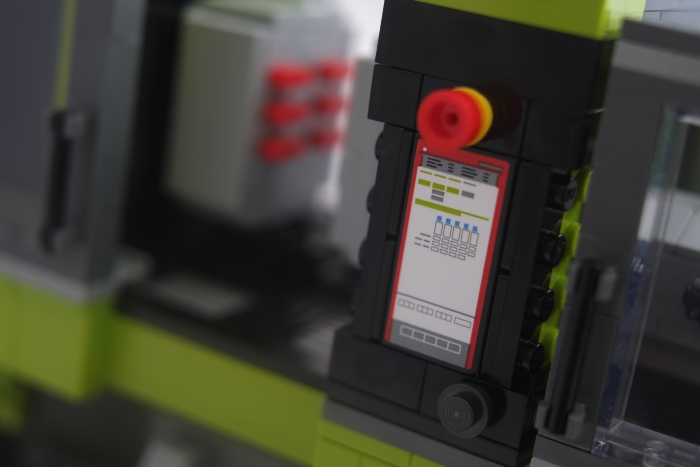
The construction itself is not very difficult—the structure is compact and a big part of the assembly of this set is laying the walls of the machine housing. Since this is a brick making machine, I was sure the set would have moving parts. However, for a large part of the building, everything indicated that the model would be static after all. Fortunately, this turned out not to be true. Three sliding glass machine mechanism covers move, but the main moving element is, of course, the extrusion mould. It moves smoothly and blends smoothly with the other part of the mould. The form is operated by a big knob located in the rear part of the housing. This is probably the only element that doesn’t reflect the real machine.
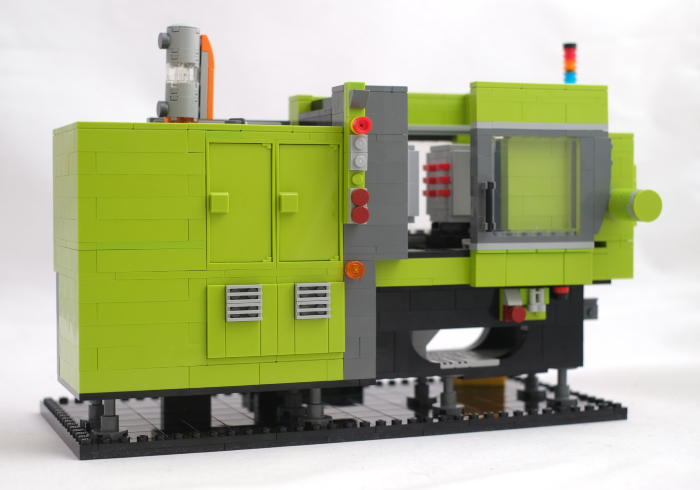
Speaking of elements. Most of the time I had the funny feeling I actually didn’t know what I was building. Okay, the conveyor belt, the mould, the bucket and those electrical devices that look like transformers are familiar and the purpose of these devices is clear. This electric section, located at the bottom of the machine and hidden behind a row of three doors, is particularly impressive.
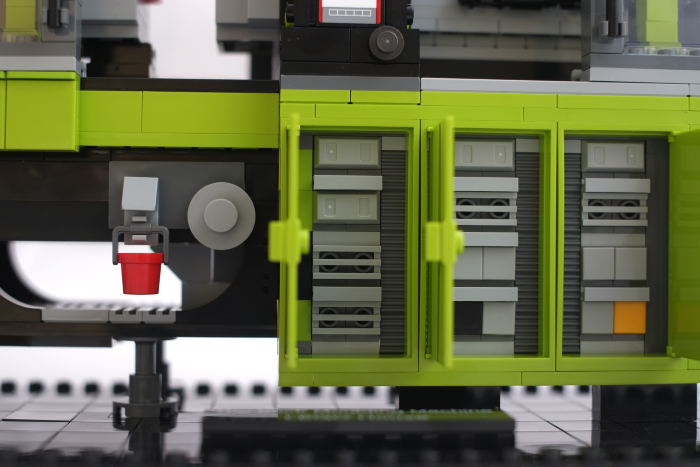
But I can only guess at the purpose of the other parts, not to mention their names. This is especially true of this strange tube-like device with orange details, which immediately reminded me of The Mr. Fusion Home Energy Reactor from the Back to the Future movie.
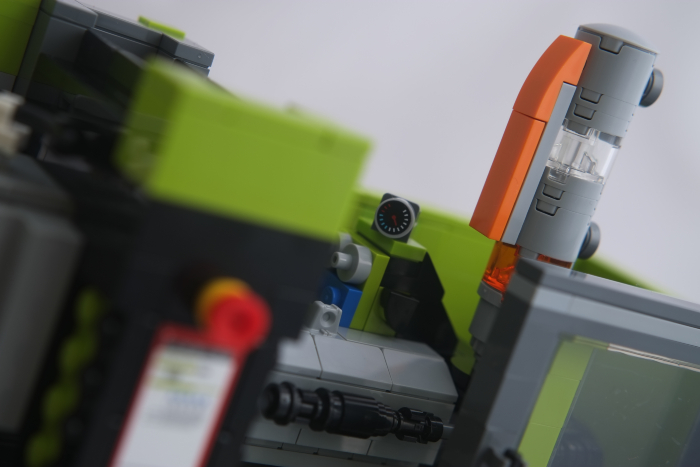
The purpose of these four glass tubes, this colorful pole on the top of the machine or this white, lamp-like device right above the mould also remains a mystery.
At least for me, since I’m not a technological boy. The whole left section of the machine looks like a giant, complicated coffee machine. With a bucket instead of a mug.
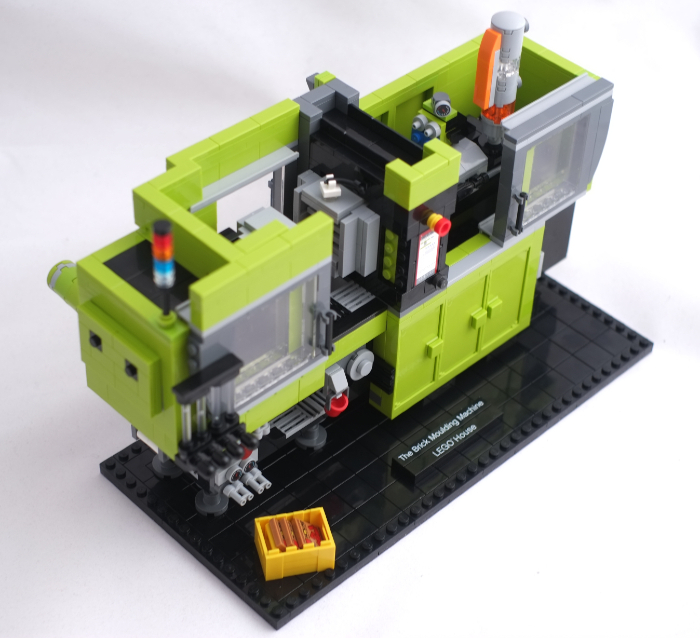
Though the forms are swollen
Keep them bricks all mouldin’
Rawhide
As mentioned earlier, the actual machine allows LEGO House visitors to produce six 2×4 bricks. Once packed, the bricks become a souvenir of your visit. The set includes three 2×2 tiles with an imprint showing bags with the said bricks.
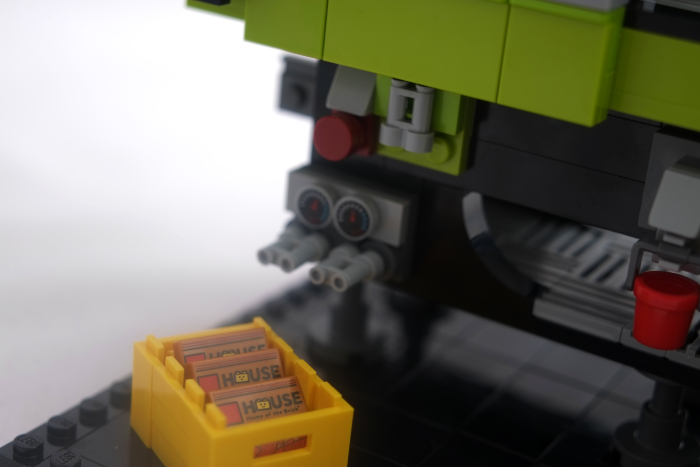
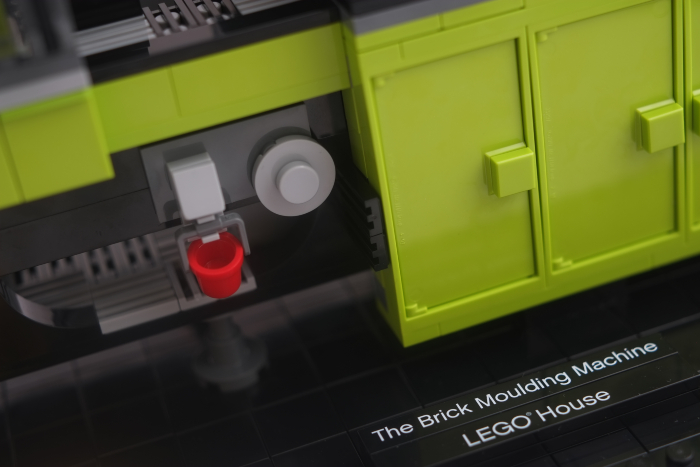
Post-audit conclusions
This set makes a surprisingly good impression for a model of a factory machine. It has this industrial flair of smooth, sleek surfaces, while the individual elements are detailed enough to catch the eye but aren’t too complicated or overwhelming. The whole set exudes an aura of some technological esotericism. All these indicators, gauges and warning lights suggest that something serious is going on, even if the process results in a piece of plastic that, together with other pieces of plastic, forms a toy. However, considering the fact that six 2×4 LEGO bricks can be made into an impressive 915,103,765 combinations, things get really serious.
And the moulding machine calmly does its job, unconsciously forming the next elements of this endless puzzle.
40502 The Brick Moulding Machine is available exclusively at the LEGO House.
Post scriptum
I wouldn’t be myself if I didn’t try to squeeze more out of this set than a cold, industrial “still life with knobs.” As soon as I saw the heart of this machine—the mould—a story began to spin in my head. This story took shape of a Six Image Narrative.
Once upon a night at LEGO House…
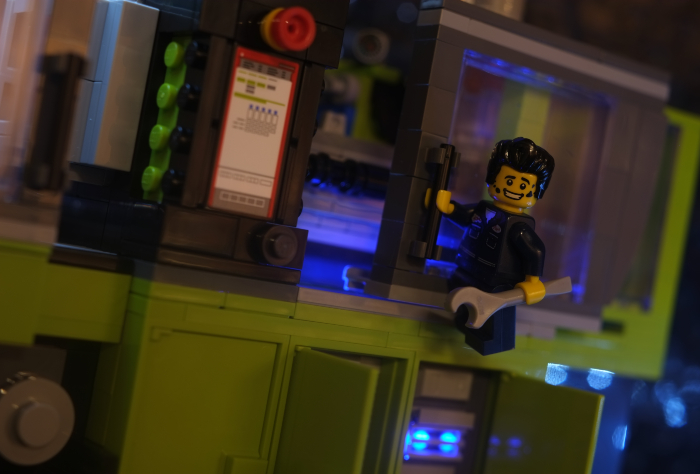
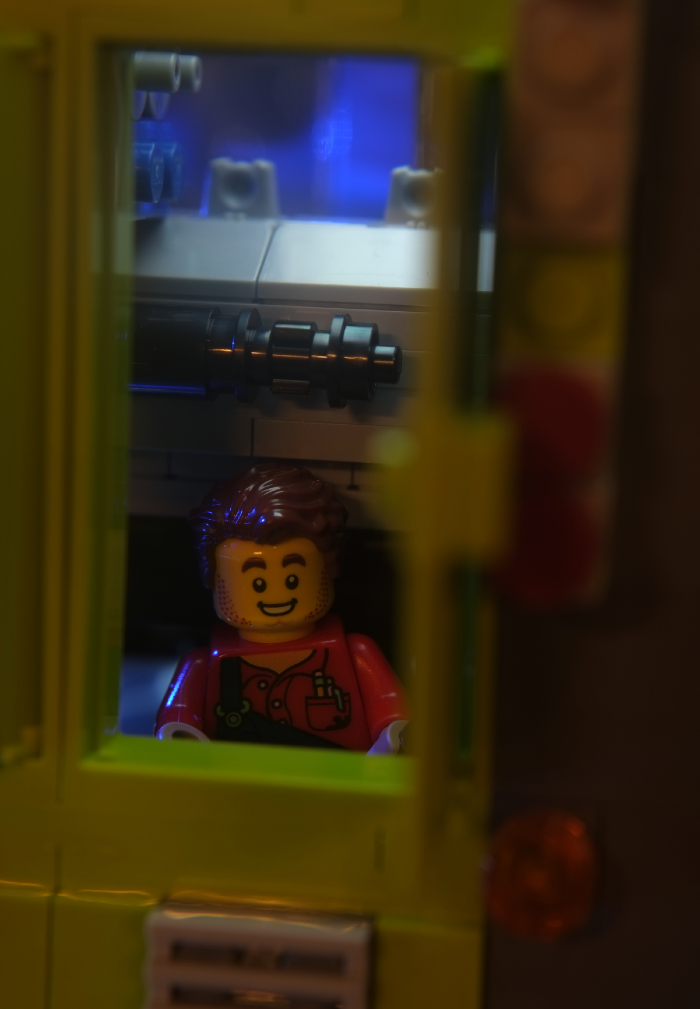
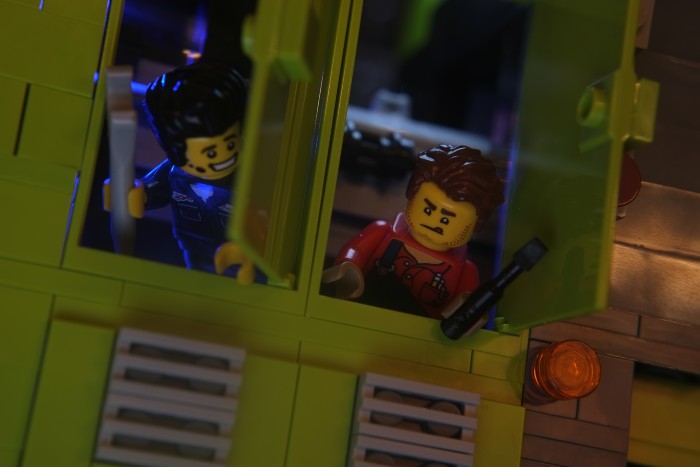
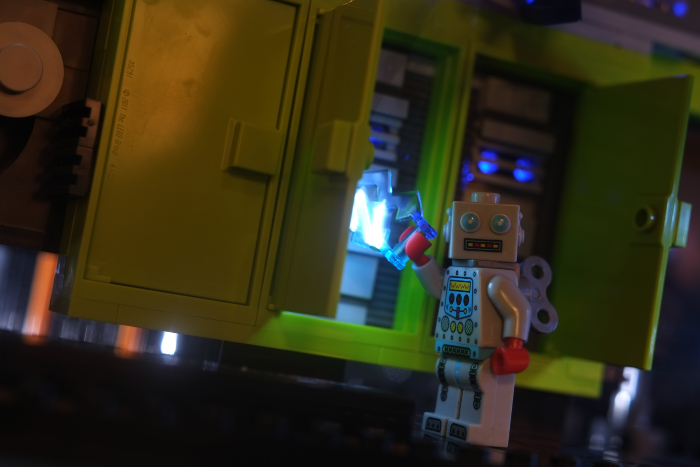
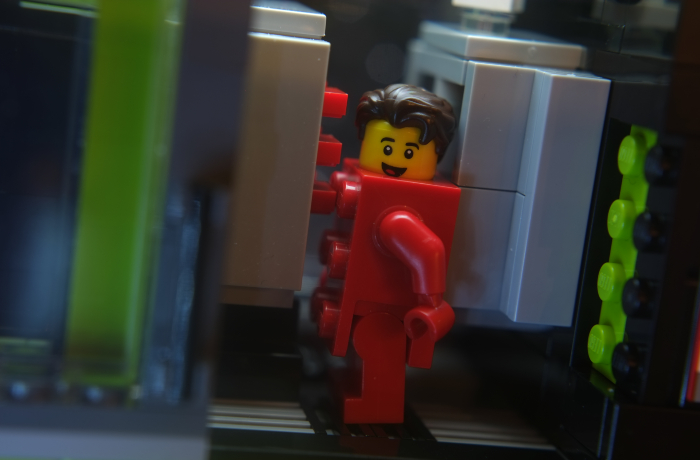
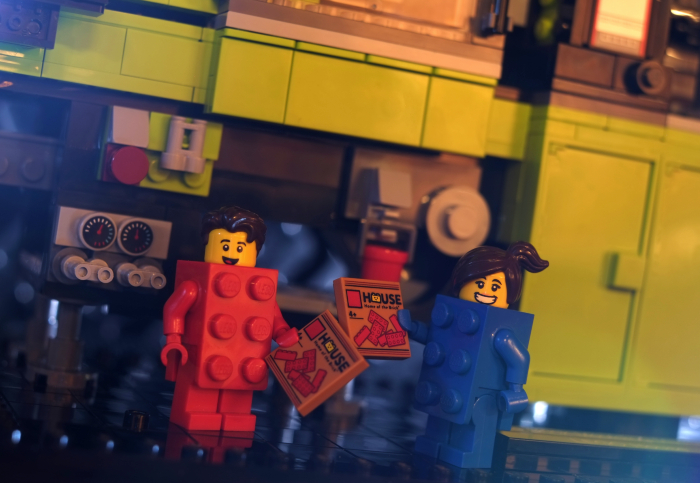
Good Morgen! While you’re here, we invite you to sign up to our weekly Toy Photographers email roundup where you’ll get a recap of all the week’s babbling. And while you’re at it, you should definitely join our MeWe community! We hold monthly contests with prizes and lots of other cool stuff.







Excellent review Tomek! I love how you took it the extra mile and added the six image narrative. It shows that power of the imagination. <3
Thank You so much Shelly!
I was bit concerned about how to approach this set, but when I saw the mould, I knew I had to make a picture with Brick Boy and then everything ran smoothly 🙂